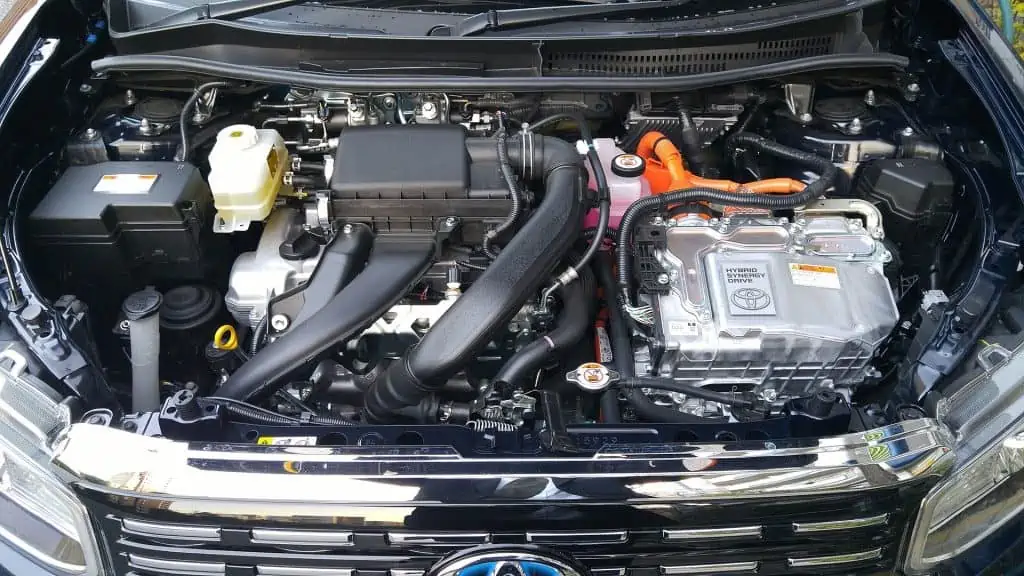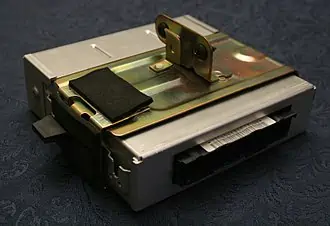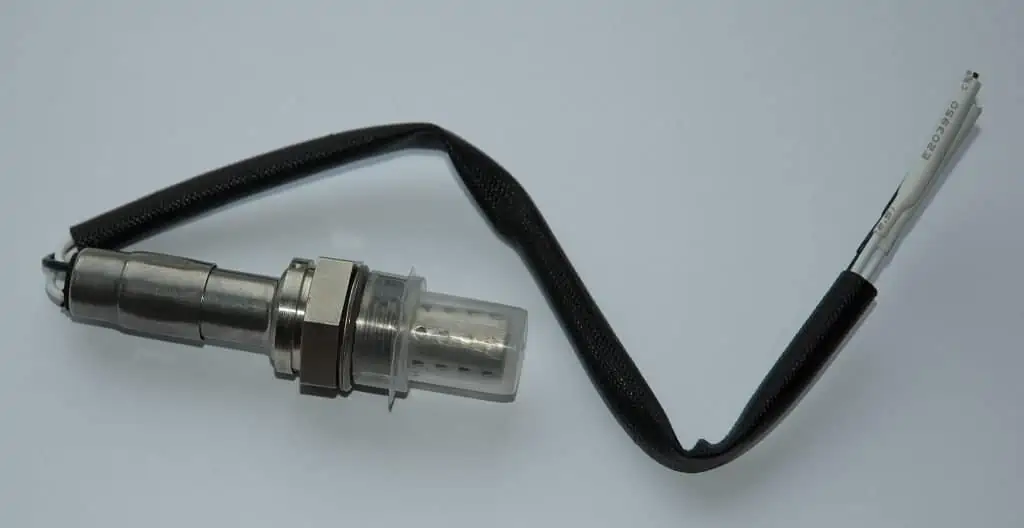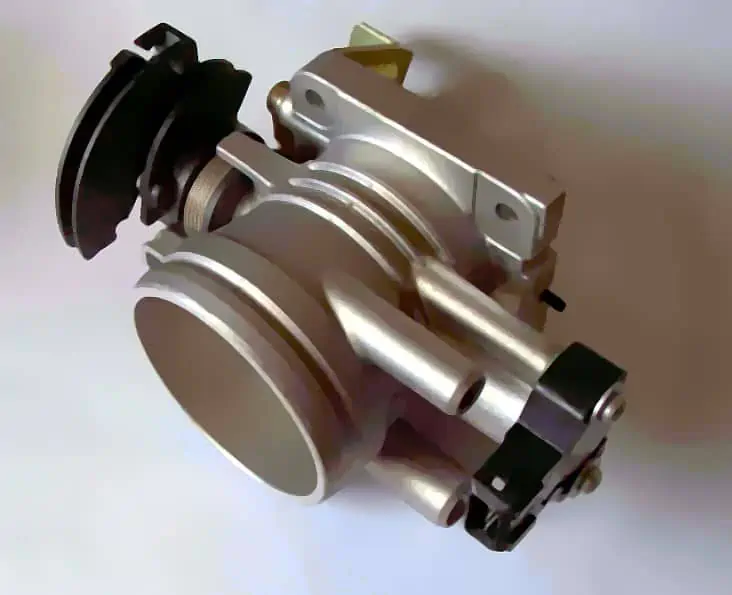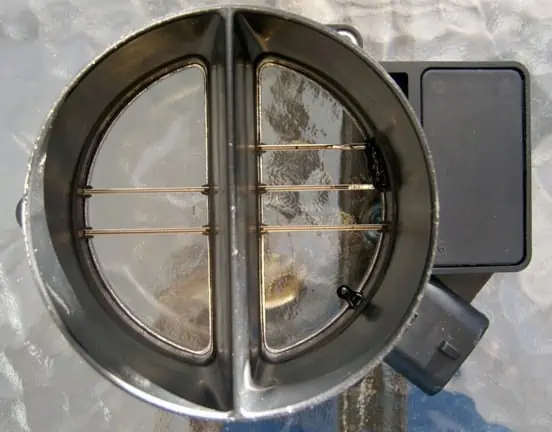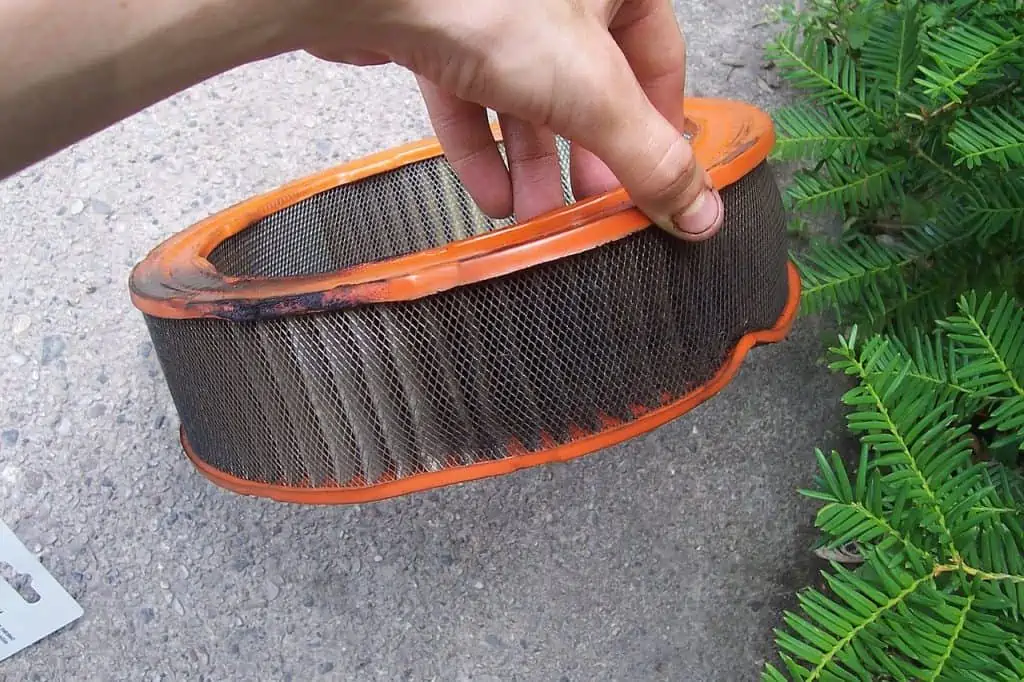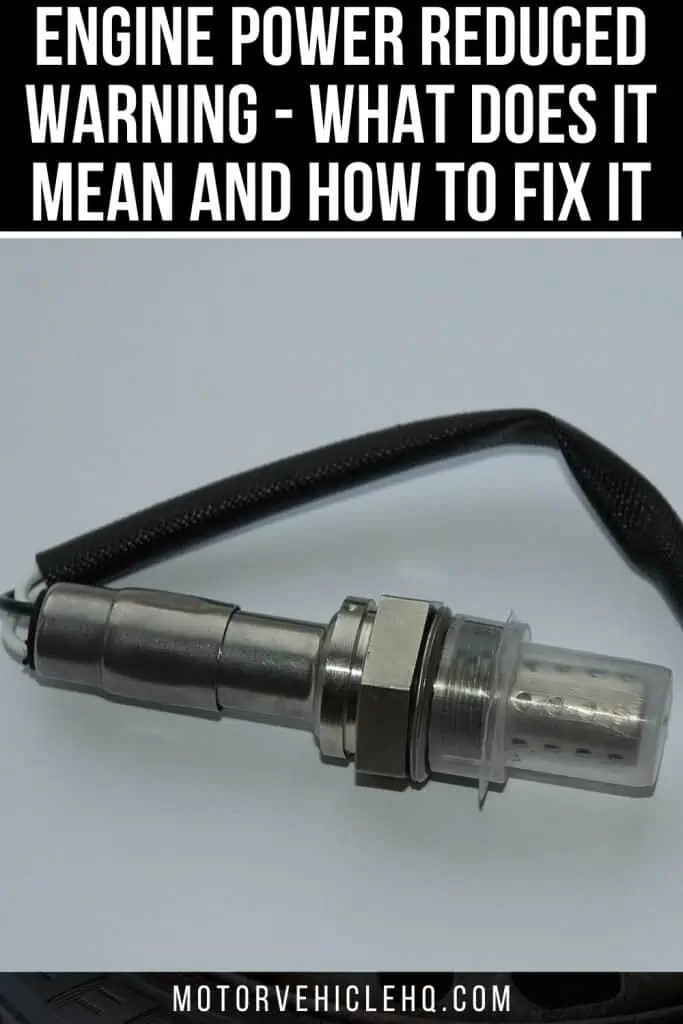You depend on your vehicle in a lot of different ways, from commuting to work to transporting your kids to school. In light of this, the main reason to be concerned is when you’re having slow engine response when you press the gas pedal engine power reduced.
In the past, this would have only required replacing the spark plugs or wires, the rotor or distributor cover, and some carburetor adjustments. However, there are a variety of reasons why your car hesitates to accelerate in today’s sophisticated vehicles.
It might occasionally be harmful. You must pay close attention to what is going on in your immediate surroundings and exercise extreme caution when avoiding slower-moving vehicles. Sometimes it’s just a bother.
In any case, you should try to prevent engine power reduced if at all possible. We’ll examine the causes of engine power reduced in this post, as well as what you should do if it occurs to you. We’ll also look at a few viable remedies.
Manufacturers build some vehicles with pop-up warning messages or warning lights to engine power reduced. Though not always applicable, these. In its place, you might see terminology more akin to “limp mode,” “limp home mode,” “safe mode,” or the always-unsettling check engine light.
Therefore, if one of those lights has been illuminated, you notice a decrease in engine power, or you simply want to be prepared if it occurs, read on.
This article goes in-depth on the reasons why engine power reduced, how to get around ‘’engine power reduced’’, and how to solve ‘’engine power reduced’’. Discover everything you need to know about the cause of your car’s sluggish behavior by reading on.
Overview of the ‘’Engine Power Reduced’’
When I use the phrase “engine power reduced,” I’m referring to an engine that isn’t running at its best. You’ll be able to tell when your motor isn’t operating at full capacity.
You will be the one operating your car, thus you will know it better than anyone. You are the best-qualified person to detect problems if they exist. Therefore, if you have a bad feeling, it’s usually true. Additionally, it’s always preferable to be safe than sorry. Don’t be embarrassed to have your car inspected by a mechanic.
A power loss may occasionally not be as obvious. If you don’t often accelerate quickly or harshly, you might not be as aware of it.
A typical car engine by CEFICEFI / CC BY-SA 4.0. Depending on whether the lambda sensor is broken, the engine may run “rich” or “lean,” that is, with too much fuel per unit of air or not enough.
Put your foot down in a lower gear to test your suspicions, which is the best course of action. Whether you have 60 or 1,000 horsepower, the vehicle should accelerate quickly and you should be able to hear the engine growl.
If it doesn’t, your car’s engine will be running with less power.
Of course, if the manufacturers installed a visual warning system in your car for this, it will just inform you. The instrument cluster of many General Motors vehicles, including Chevrolet, Cadillac, Buick, and GMC, is equipped with this light.
The “Check Engine” light will probably likely come on in addition to this.
What Is the Meaning of ‘’Engine Power Reduced’’?
Your dashboard’s “engine power limited” warning light can also be on if your vehicle isn’t accelerating properly. It’s possible that the “check engine” light also came on. Do not immediately panic! To allay your worries, we’ll go through everything you should know about this troubling phenomenon.
The “engine power reduced” warning light on your dash often indicates that your car’s performance has been decreased to protect the engine. Your vehicle’s computer sometimes referred to as the “electronic control unit” (ECU), has initiated the Reduced Power Mode after identifying a system failure.
In other words, your car will illuminate the “engine power reduced” indicator to let you know that it has switched to fail-safe mode.
This may prevent your car from accelerating as it should. Even if the car’s power isn’t instantly diminished, the next time you drive it, its performance might be constrained. In severe circumstances, the ECU of the car can even stop all gasoline delivery to the engine, rendering your car immobile.
‘’Engine Power Reduced’’ Related Problems and Codes
A specific trouble code will show up in the electronic control module’s (ECM) memory depending on the kind of car you drive and the issue the ECU discovers. Some examples of these error codes are:
- P0120-P0124: This error code denotes issues with the circuit, the pedal or throttle position, or both.
- P1125: Depending on the make and model of your car, this code denotes a malfunctioning system or component.
- P1518: Depending on the make and model of your car, this code may indicate a malfunctioning system or problematic system component.
- P2111: The throttle actuator control system is stuck open, according to this error code.
- P2135: This code denotes an issue with the A/B voltage correlation, the throttle position (TP) sensor or switch, or the accelerator pedal position (APP).
The easiest approach to accurately diagnose and fix your car is to take it to a nearby service center and have a qualified mechanic look it over.
What Does ‘’Engine Power Reduced’’ Fail-Safe Mode Mean?
Your car has entered fail-safe mode, according to the “engine power reduced” notification. All contemporary vehicles have a driver protection fail-safe system.
The ECU of your vehicle might go to a fail-safe mode to either safeguard the persons inside or stop additional harm to the vehicle. There are numerous ways in which your car’s onboard electronics could restrict its performance when it is in a fail-safe mode.
The electronic control unit might reduce the maximum throttle opening, for instance, if there is a problem with the electronic throttle actuator. On the other hand, the electronic control unit may restrict transmission operation to a specific gear range if there is a problem with your car’s transmission.
An electronic control unit (ECU) by Specious / CC BY-SA 3.0. After detecting a system failure, the computer in your car, also known as the “electronic control unit” (ECU), starts the Engine Power Reduced Mode.
Some cars may alert you that they are in fail-safe mode by displaying a specific message on the dashboard. Occasionally, your “Check Engine” light might come on.
What Does ‘’Engine Power Reduced’’ In Limp Mode Mean?
Most reasonably current vehicles have Limp Home Mode.
In today’s autos, mechanical components are becoming less and less important and more and more replaced by electronics. We substitute sensors for linkages, batteries for engines, and sophisticated ECUs for the standard three fuses.
Limp Home Mode was offered by manufacturers as a result of this electrical change. It constantly keeps an eye on everything using the numerous sensors within the car. The ECU will activate Limp Home Mode if an issue develops, such as if one of the sensors notices a problem with the throttle position sensor.
You’re most likely in Limp Home Mode if you can only use one or two gears and go between 30 and 45 mph. Even the car itself may tell you.
Everything moves more slowly and the engine produces less power and work when Limp Home Mode is engaged. The likelihood of more damage increases the harder you push your motor. Limp Home Mode can help to stop this.
Limp Home Mode shouldn’t be used to go extremely far distances. Wherever you can, try to drive briefly.
Driving with Limp Home Mode turned on might be risky on fast roads where you run the risk of causing traffic or an accident. If your speed is significantly constrained, stop and try to restart the engine. Unfortunately, you might need to call for help if this doesn’t work.
What Turns On the “Engine Power Reduced” Light?
Similar to why your “Check Engine” light is on, wondering why your car’s “engine power reduced” light is turned on. It would be impossible to list all the alternatives.
However, a malfunction with your car’s electronic throttle actuator control (TAC) system is one of the most frequent reasons for this issue. This configuration is frequently used in contemporary vehicles in place of the conventional throttle body and linkage.
The ECU controls two accelerator position sensors in a throttle actuator control system to ascertain your intent to accelerate. Then, using data from two throttle position sensors, the device determines the proper throttle response.
The ECU employs an actuator motor to move the throttle after gathering the appropriate data from the sensors, which control the airflow into your car’s engine.
The “engine power reduced” dashboard warning light might easily turn on if there is a problem with your throttle actuator control system. The problem might, for instance, be with the throttle body, one of the car’s sensors, or even the pedal assembly.
Although one of the most frequent causes of your car going into a lower power mode is a problem with the throttle actuator control, there are many additional alternatives.
For instance, if an electronic fan clutch malfunctions, some vehicles will display the notice “engine power reduced”. This notice could appear in other vehicles if there is a problem with the fuel system. The list continues forever.
Other problems that can cause your car’s engine power to decrease include the following:
1. A Loose Wire, Clamp, or Harness
You’ll probably require an automotive electrician if this is the issue. You might have an advantage if you are familiar with electrical components in this situation.
A new car’s wiring may easily total more than a mile. Technically speaking, that is lots. Anywhere in this room could have a problem with your wiring system.
A three-wire oxygen sensor by Mnemo / CC BY-SA 3.0. Oxygen sensors are used to calculate the amount of oxygen leaving a car’s exhaust system. Furthermore, they help to modify the air-fuel ratio for effective combustion.
If you are familiar with multimeters, circuit diagrams, and electrical components, you might be able to locate them on your own. But the majority of us need an expert.
Like defective sensors, improper wire harnesses may result in engine power reduced.
The connectors and cables that keep your car running and power all of its parts are abundant. Your car may experience problems due to an electrical short, a loose ground wire, or a loose clamp.
2. Malfunctioning Oxygen Sensors
The oxygen sensor is also known as the lambda sensor.
Engineers utilized the Greek symbol lambda to designate the sensor’s voltage range, hence the name “lambda.” It contrasts the oxygen content of the exhaust with that of the surrounding air.
The ECU receives input from these readings. The amount of oxygen entering the chamber can be altered as a result. This results in eco-friendly, effective combustion.
The engine may run “rich” or “lean,” that is, with too much gasoline per unit of air or not enough, depending on whether the lambda sensor is malfunctioning. Limp Home Mode could potentially be activated by it.
These sensors are found in older vehicles. Modern vehicles have two. The first is often located on the exhaust manifold, while the second is typically located halfway down the exhaust pipe underneath the vehicle.
A straightforward replacement is generally always the best course of action. Install the new sensor after removing the old one.
The amount of oxygen leaving a car through the exhaust system is measured using oxygen sensors. Additionally, they aid in adjusting the air-fuel ratio for efficient combustion. Your “engine power reduced” light may also illuminate in addition to the “check engine” light if one of them is malfunctioning.
3. An Error In the Throttle Body
Again, manufacturers now substitute throttle position sensors for mechanical cables in more recent vehicles. A sensor is employed in place of a direct physical connection between the pedal and the throttle plate. The throttle position sensor (TPS) is the name of this sensor.
The throttle plate is located inside the throttle body.
The ECU will incorrectly translate the pedal input into more or ”engine power reduced” if a TPS malfunction arises. The ECU would engage limp Home Mode to lower the danger of accidents because it wouldn’t know exactly what inputs you were making.
Within the throttle body of your car, there is a butterfly valve that opens and closes to let air into the engine. The “engine power reduced” light on your vehicle can turn on if this valve is damaged.
4. The Mass Airflow Sensor Is Bad
The amount of air entering the engine is measured by the MAF sensor. Between the air filter and the intake manifold is where you’ll discover it. Every time you open the hood of your vehicle, you can easily see it.
If there is a problem with this sensor, the engine control unit (ECU) won’t know how much air is entering the engine. The ratio of fuel entering the engine is therefore incorrect as well. Once more, you’ll have an engine that is either operating too richly or too leanly.
Limp Home Mode is typically not directly caused by MAF sensor issues. Stalling, “engine power reduced,” and cranking but not starting are all indications that there is a problem. Changes in transmission shifting patterns could be a sign of more serious issues.
Your car has a butterfly valve inside the throttle body that opens and shuts to permit air into the engine. Your car’s “engine power reduced” light may come on if this valve is damaged.
It can be slightly more difficult to replace the MAF sensor than certain other sensors. You might need a fundamental understanding of wiring. You might be able to gently clean it, but exercise caution because you’re handling electrical equipment.
5. The ECU Is Defective
The ECU serves as the primary computer system in your car. Every sensor reading from the car is taken into account. To maximize engine performance, it continuously modifies factors like fuel delivery.
ECUs in older vehicles are far less sophisticated. In the distant past, there was no ECU at all. It was originally applied by automakers in 1970.
Numerous little ECUs, each controlling a distinct feature of modern autos, number in the hundreds. The entire system is referred to when the word “ECU” is used.
ECUs may experience issues. Although it’s uncommon, it is feasible. These flaws may result from trauma or a manufacturing problem.
You can notice several things start to act up if an ECU malfunction starts to manifest. You might notice some odd behavior from your lights to your windshield wipers.
This may cause Limp Home Mode to activate. The ECU expects the worse since it is unable to interpret the readings it is getting.
When a customer previously requested a replacement wiper motor since their old one wasn’t functioning properly, the problem was an erroneous ECU. An expert in car electrical systems had to reprogram it.
Unfortunately, if you want to keep the car, you will have to pay this excessive and unnecessary expense.
The “engine power reduced” light coming on could be one of the most serious and expensive problems if there is an issue with your car’s ECU.
6. The Catalytic Converter Could Be Obstructed
After the exhaust manifold, this auto part is installed underneath the car. Through oxidation and reduction, it transforms carbon monoxide into carbon dioxide, significantly reducing hazardous emissions into the atmosphere.
7. Battery Problem
Often, a battery issue won’t result in the “engine power reduced” light turning on. Your “engine check” light may still come on as a result.
8. The Transmission Is Having Issues
A transmission fault code is another issue that will most likely set off the “check engine” light before sending the “(engine power reduced)” message. These can include low transmission fluid or a slipping clutch.
Why Does “Engine Power Reduced” Fail-Safe Mode Occur?
Similar to when your “engine power reduced” sign illuminates, there are several potential causes for your vehicle to go into fail-safe mode. Here are a few of the most frequent causes:
1. Troubles with Automatic Transmissions
Your car’s transmission may go into fail-safe mode if there are problems with it or with the electrical controls. A common name for this is “limp mode.” In this condition, the machine often defaults to a specific gear and the transmission line pressure rises.
The MAF sensor calculates how much air is entering the engine. You’ll find it between the air filter and the intake manifold. You can see it every time you open the hood of your car.
2. A “Drive-By-Wire” System Failure
The “drive-by-wire” system found in modern cars today swaps out conventional mechanical parts for complex electronics. In many cases, the ECU must limit performance if a problem develops in one of these systems to protect the driver, the passengers, and the vehicle.
3. Problems with the Charging System
Numerous electronics on older models are battery-powered only. In some circumstances, a weak battery can impair their performance and cause the car to go into fail-safe mode. The fail-safe mode might also be activated if your alternator is overcharging or undercharging.
4. Damaged or Faulty Wiring
Wires that are corroded, broken, or that are loose can prevent your car’s onboard electronics from working properly. Numerous issues may result from this, such as the car entering fail-safe mode.
5. Troubles with Engine Performance
Your vehicle may go into fail-safe mode due to a variety of engine performance difficulties, such as overheating and misfiring.
6. Broken Sensors
Not every malfunctioning sensor will put your car in fail-safe mode. However, some sensors that are essential for safeguarding the vehicle and/or its occupants can cause it to enter a fail-safe mode.
7. Data Network or ECU Problems
Modern vehicles have a large number of ECUs, or modules, that interact with one another across a reliable data network. Your vehicle may enter a fail-safe mode if this network is somehow disrupted or if one of the crucial ECUs can’t communicate.
Any of these issues can restrict engine power and put your vehicle into a fail-safe mode.
Is It Safe to Drive with the “Engine Power Reduced” Warning Light On?
It is feasible to use your car while the “engine power reduced” light is illuminated. However, this function is referred to as “limp mode,” which is the maximum reasonable amount of operation for your vehicle.
The risks of driving in this mode are minimal. However, the car won’t be enjoyable to drive because of the low acceleration, high gas mileage, and jerky gearshifts on some models.
Additionally, non-essential auxiliary parts like the radio may be disabled in some vehicles. The simple answer is that while it is possible to drive with your “engine power reduced” light on, if you need to travel more than a few miles, you should have your car towed.
When the “Engine Power Reduced” Light Turns On, What Should I Do?
The first thing you should do if the “engine power reduced” light comes on while you are driving is to immediately drive your car back home or to a repair shop. Don’t try to drive the car if you’ve already arrived at your house.
Known Problems That Result In “Engine Power Reduced” In Different Models
Here are some of the recognized reasons for your car’s acceleration troubles if your “engine power reduced” sign is on and you drive one of these particular vehicle types:
The exhaust catalytic converter by The RedBurn / CC BY-SA 3.0. An “engine power reduced” warning will also be present if your catalytic converter is obstructed or broken. Replacing it will cost you substantially more, possibly up to $2,000.
1. GM Models with Problems In the Throttle Assembly
A problem with the throttle assembly has been linked to “engine power reduced” issues in some GM car types. A DTC P2135 warning and the general “engine power reduced” light on your dashboard will typically alert you to the problem.
The following models fit within this category:
- Between 2008 and 2009, Chevrolet produced the TrailBlazer.
- Between 2008 and 2011 Chevrolet Tahoe Two-Mode Hybrid
- Between 2009 and 2011 produced Chevy Silverado Two-Mode Hybrid
- Between 2009 and 2011 Cadillac Escalade Two-Mode Hybrid
- GMC Envoy produced between 2008 and 2009
- 2008 to 2009 production years for the Hummer H2
- 2008 to 2010 Hummer H3 production
- Yukon, Yukon Denali, Yukon XL, and Yukon XL Denali models produced by GMC between 2008 and 2011
- Chevy models from 2008 to 2011 include the Avalanche, Express, Colorado, Silverado, Suburban, and Tahoe
- Between 2008 and 2011 Cadillac Escalade, Escalade ESV, and Escalade EXT models were produced.
- Between 2009 and 2011 produced GMC Sierra Two-Mode Hybrid
- Between 2008 and 2011 produced GMC Yukon Two-Mode Hybrid
Affected engine categories include:
- LMG, L94, L20, LY5, LC9,
- LS2, LZ1, L76, LH8, LH9
- LY6, LY6, RPO, L96, LH6, L9H
- LMF, LFA, LY2, L92
Have a GM-certified mechanic take a look at your GMC immediately if it is one of the brands and models mentioned above and has (engine power reduced).
2. Charge Air Cooler Ford F-150
The National Highway Traffic Safety Administration looked into similar complaints and discovered that Ford F-150 pickups built between 2001 and 2013 and powered by 3.5-liter turbocharged direct injection engines would abruptly experience engine power reduced while traveling at highway speeds.
According to company service bulletins, the charge air cooler (CAC) was to blame for this. This is due to the possibility of moisture buildup while the truck was traveling at highway speeds in humid circumstances for an extended period.
Is It Possible to Fix My “Engine Power Reduced” Problem At Home?
The “engine power reduced” light on your car will typically come on along with a DTC in the computer’s memory that denotes a problem with a particular sensor or system.
Don’t, however, jump to the conclusion that a certain component or system mentioned in the DTCs is broken right away. A harness, circuit, connector, or even a completely separate part or system could be at fault.
Many troublesome wires or components that link the multiple actuators and sensors to the electronic control module might occasionally be attributed to bad engine grounds (ECM). Therefore, you must first examine the state of the engine grounds, including the battery connections.
Currents and voltages will drop as a result of a poor ground connection, raising a variety of drivability issues. Check the engine grounds properly with a digital multimeter.
The sensors, system circuits, or actuators may be affected by damaged, corroded, or loose connections, which will be easy to spot as a result.
Before changing any DTCs, test the specific parts or circuits that the code relates to making sure they are defective.
Be sure to switch off the ignition before inspecting the electronic parts, then:
- Examine the connector for rust or dirt after unplugging it.
- To check for any loose wires, pull on the harness connector’s cables.
- To ensure proper connections, check the connections at both ends of the cable.
A blocked air filter, which is also easy to fix and replace, won’t result in an error code.
If I Can’t Fix the “Engine Power Reduced” Problem Myself, What Do I Do?
Many of the problems that could result in “engine power reduced” in your car need to be fixed right away. Though many of these problems may be simply fixed with some basic knowledge and investigation, you shouldn’t panic.
Although taking your vehicle to a shop for repairs can be more expensive than doing them yourself, you’ll end up saving a lot of time and trouble, in the long run, thanks to their advanced scan tools and ready access to equipment.
Before beginning any repairs, the mechanic will perform a complete and in-depth scan of the vehicle to identify the precise location of the issue. After that is finished, you ought to get the components and labor estimate.
How Much Does “Engine Power Reduced” Cost to Fix?
There are solutions available if you notice the message “engine power reduced” on your dash. Depending on the underlying problem that caused this warning notice to emerge, you will often pay between $100 and $500 for this.
For instance, it might be brought on by poor wiring, faulty O2 sensors, broken throttle position sensors, filthy MAF sensors, and so forth. Repairing or replacing them is comparatively inexpensive.
Unfortunately, if your catalytic converter is clogged or malfunctioning, you will also receive an “engine power reduced” signal. You’ll pay significantly more to replace it, perhaps even up to $2,000.
If My Car Doesn’t Have an “Engine Power Reduced” Warning Light, What Should I Do?
If your car’s “engine power reduced” warning light is not on but you can still feel the engine struggling or going into limp mode, you should try to figure out what’s happening as soon as possible.
If you think there might be a problem, you can also scan the vehicle beforehand.
Minimum driving is required of the car until the problem is fixed. Otherwise, it can further harm the vehicle, necessitating more expensive repairs. It is also dangerous.
Remember that it just takes one problem with one system to affect other systems as well. Additional problem lights within the gauge cluster of your car may also illuminate in response to the same fault code that activates the “engine power reduced” light.
If you suspect that your car is using less electricity but none of the warning lights are on, you can examine the following parts:
1. The Air Filter
An error code won’t be produced by a blocked air filter, which is also simple to fix and replace.
2. The Gas Pump
Fuel pump issues might be more difficult to identify and more expensive to repair. If the dashboard warning lights are not on and your car is running poorly or you are attempting to start it but are unable, the fuel pump may need to be replaced.
3. The Tire Pressure
Low tire pressure alone won’t affect how well your vehicle runs, but it might cause friction on icy roads. Your driving dynamics may change significantly as a result of this.
The Conclusion
In conclusion, a variety of factors can lead to ”engine power reduced”. Don’t feel ashamed if you end up needing assistance.
When you run out of electricity, the solution is usually a straightforward one. There may be no way to avoid a significant expense or having to write off the car, which is unfortunate because sometimes it’s a difficult and expensive one.
The key lesson to remember? ”Engine power reduced” and Limp Home Mode is more than just annoying inconveniences. To prevent future harm, they must be addressed as quickly as possible. Hopefully, this post will help you discover a solution to your issue.
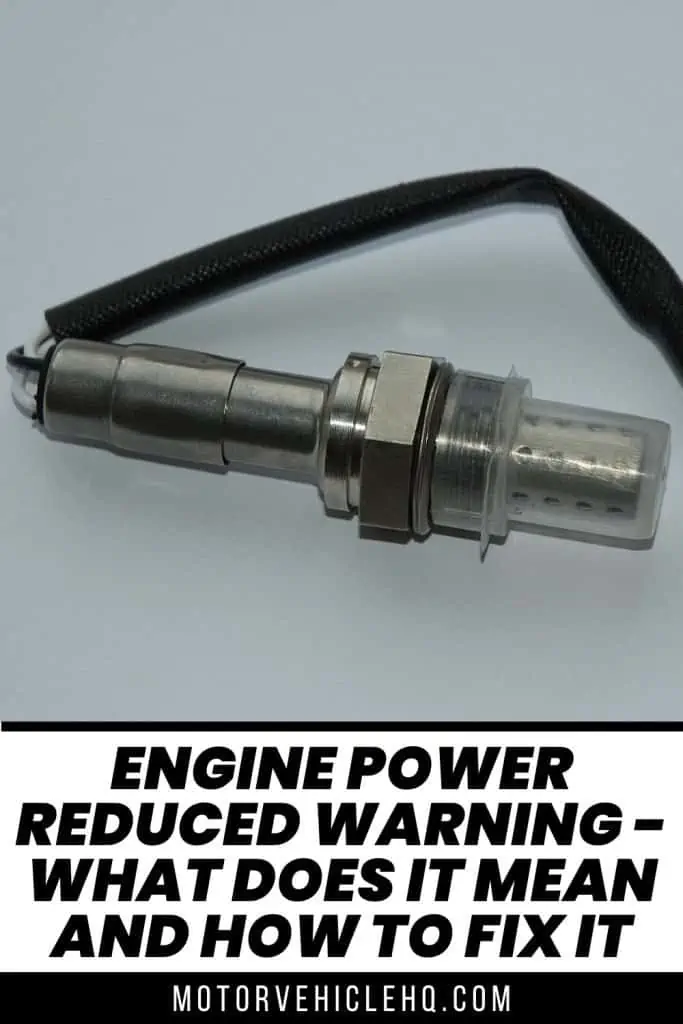
A three-wire oxygen sensor by Mnemo / CC BY-SA 3.0

Jim Wicks is the founder of MotorVehicleHQ. With over two decades of experience in the automotive industry and a degree in Automotive Technology, Jim is a certified car expert who has worked in various roles ranging from a mechanic, car dealership manager, to a racing car driver. He has owned more than 20 cars over the past 15 years. Ask him about any vehicle you see on the road and he can tell you the make, model and year. He loves the aesthetics of all things cars, and keeps his vehicles in pristine condition.
In his free time, Jim enjoys getting his hands dirty under the hood of a classic car or taking long drives along the country roads. His favorite car? A 1967 Shelby GT500, a true classic that, according to Jim, “represents the pure essence of American muscle.”
